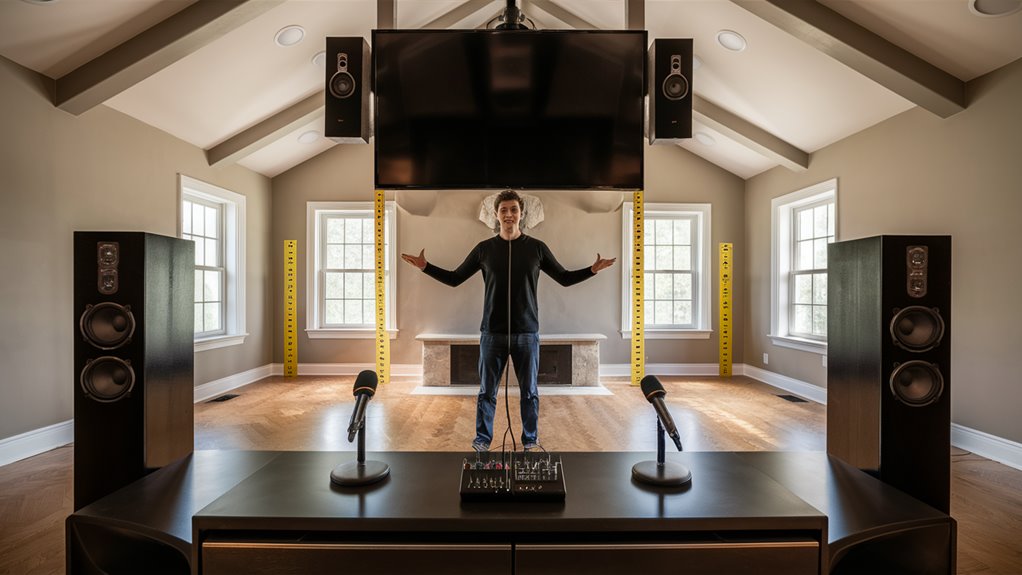Choose the Best Karaoke System for Your Home

Main Tech Specs
When you get a home karaoke system, power is key – get at least 50W RMS for clear sound at home. A great system should have two mic ports with own sound levels and digital signal processing (DSP) for top echo sounds and key tuning choices.
Connections and Types
Modern karaoke systems must handle many file styles like MP3+G, CDG, and WAV. Main connect features are Bluetooth and USB ports for lots of music options. This lets you work with different tools and songs, giving you more fun 호치민가라오케 choices.
Room and Speakers
The best karaoke setup needs smart room planning. Think 15-20 square feet for each person for a cool singing spot. Put speakers at 60-degree angles for the top sound spread and sound. This setup bring great sound feel while dropping sound problems.
Prices and Features
Prices go from $300 to $2000, and more choices and better sound often cost more. Top systems have:
- Smoother voice effect tech
- Top-quality speakers
- More ways to link
- Pro mixing tools
- How to Choose the Right Karaoke Service for You
- Better screen options
Think about what you’ll want for a long time when picking choices, as more costly systems usually last longer and sound better.
Full Guide to Karaoke Systems: Forms and Features
Popular Karaoke System Forms
All-in-One Karaoke Machines
All-in-one karaoke systems bring all you need in one thing. This has speakers, sound control, and music play. These handy tools have screens, USB/Bluetooth links, and mic ports, good for home joy and easy singing. Set up is easy and doesn’t need tech skills.
Pro Karaoke Gear
Pro karaoke systems use separate parts for the best setup and sound. These setups use players, amps, speakers, and screens. They read many types like MP3+G and CD+G, and have balanced XLR ports and high-end sound tech. Pro systems bring deep sound and choices for big groups or real singers.
Mobile Karaoke Apps
App-based karaoke turns phones and tablets into singing spots. These systems need speakers but let you sing with lots of digital songs from pay services. You can sing anytime, anywhere with just net needed.
Home Theater Karaoke
DVD/Blu-ray karaoke systems use your home theater for top-quality shows. These setups offer HD video and digital sound, making most of your home system for great sound and visuals. This link gives the best sound and screen show for home use.
Must-have Features for a Karaoke System

Common Audio Specs
Audio power is the start of any good karaoke system. Systems with 50W RMS or more are best for home use. Digital Signal Processing (DSP) with echo control and key tuning really helps your singing sound top. Separate volume controls for mics and music let you change your sound just right.
Links and Matches
New karaoke systems must read lots of file types, like MP3, MP4, and CDG. Main connects include Bluetooth, USB, and HDMI. Systems with two mic ports are great for singing with others, while built-in speakers with 4-8 ohm balance sound well. For screens, 720p is clear enough for words.
Mic Quality Points
Top karaoke singing needs mics with exact tech points. Look for ones with 80Hz-15kHz range and sensitivity of -72dB or more. Think if wireless-is better for you than wired. Your choice of dynamic or condenser mics changes how well they work in different sound spots.
Storage and Sorts
Room to keep songs affects how many-sided your system is. Check playlist tools and song organizing based on how many tunes you have. Systems with more storage room through extra devices are ready for the future. Cloud links let you reach more songs and keep your system current.
All About Karaoke Sound and Setup
Needed Audio Parts for Great Karaoke
Speaker Specs
Great sound in karaoke setups need the right mix of audio parts. Ideal speaker power goes from 50-100 watts RMS for home uses. Powered speakers with their own amps give the top performance, while separate amp and speaker mixes make sure clear voice sound at high volumes without mix-ups.
Choose Pro Mics
Top mics are key for pro karaoke. Pick dynamic mics with cardioid patterns and 50Hz-15kHz response for best results. Great audio needs built-in tech to cut feedback and signal-to-noise over 60dB. XLR ports are better than 1/4-inch for clear sound and sure links.
Mixers and Sound Effects
A good mixer should have at least 2-band EQ control, with 3 bands for the best voice changes. Sound effect tech needs 40-200ms delay.
